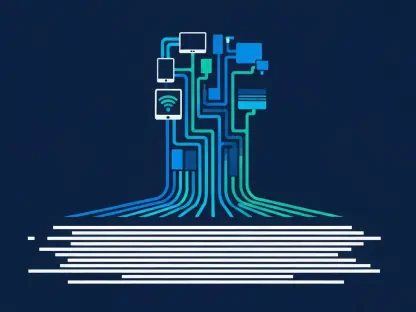The current state of U.S. government agencies and critical infrastructure preparedness against cybersecurity threats is facing a crucial test. Rising threats from nation-state actors, particularly China, highlight the need for enhanced defenses and resilience in protecting national stability. This article delves into insights and recommendations provided by the Cybersecurity and Infrastructure Security Agency (CISA)’s Cybersecurity Advisory Committee (CSAC), aiming to unpack the multifaceted challenge of tackling these sophisticated cyber threats.
Urgency of Cyber Defense Enhancement
Escalating Threat Landscape
The urgency to bolster cyber defenses in the U.S. has never been more pressing. With nation-state actors, primarily China, ramping up their cyber capabilities, U.S. critical infrastructure faces increasing risks. The draft report from CSAC highlights an immediate need for action, stressing that these sophisticated threats could undermine national security and stability. The potential for catastrophic disruptions to energy grids, financial systems, and healthcare networks elevates the necessity for urgent and strategic interventions.
The CSAC underscores how critical infrastructures, encompassing energy grids, financial systems, and healthcare networks, remain particularly vulnerable. These sectors are not only crucial for the daily functioning of society but also attractive targets for adversaries seeking to disrupt and cause significant harm. Ensuring these infrastructures are cyber-resilient is, therefore, paramount for national security. If these essential systems were compromised, the consequences could be dire, affecting millions of Americans and weakening the nation’s overall security posture.
Analyzing Current Defensive Measures
Current defensive measures are dissected, revealing gaps and areas for improvement. While efforts have been made, the evolving nature of cyber threats necessitates a dynamic and adaptable defense strategy. There is a recognized lag in implementing comprehensive defensive measures across various sectors, which could be detrimental if not promptly addressed. The strategies that were once effective may no longer suffice, given the advanced tactics and techniques utilized by nation-state actors.
The CSAC report calls for a reassessment of existing cybersecurity frameworks and the integration of advanced protective measures. By leveraging cutting-edge technology and proactive defense mechanisms, the U.S. can better shield its critical infrastructure from imminent threats. This includes utilizing artificial intelligence for threat detection, enhancing encryption standards, and ensuring constant vigilance against new vulnerabilities. Revising policies to reflect the latest threat intelligence is crucial for maintaining robust defense mechanisms capable of withstanding sophisticated cyberattacks.
Recommendations for Resilience and Support
Building Resilience in Critical Infrastructure
The report from CSAC’s Building Resilience subcommittee presents several key recommendations aimed at bolstering the nation’s cyber defenses. One of the primary suggestions involves increasing support for small but systemically important entities. These smaller entities often lack the resources to implement robust security measures and thus, represent weak links in the broader cybersecurity chain. Providing tailored resources, training programs, and financial assistance can significantly fortify these entities against emerging threats.
By offering additional support, resources, and guidance to these small entities, CSAC believes it is possible to significantly enhance overall infrastructure resilience. This approach includes tailored threat advisories specifically pertaining to China-backed groups like Volt Typhoon, ensuring that all sectors are well-informed and prepared. These advisories are crucial for timely and effective responses to potential threats and play a vital role in preemptive defense strategies, allowing smaller entities to act swiftly and decisively.
Improving Threat Advisories
A major focus of the recommendations is to improve the efficacy of CISA’s threat advisories. Effective communication of threats is crucial in enabling all stakeholders to take necessary precautions. By streamlining the advisory process and ensuring timely dissemination, stakeholders can better respond to potential threats. The current methods of relaying information sometimes fall short of conveying the urgency and specifics required for prompt action.
The involvement of diverse sectors in regular tabletop exercises sponsored by CISA’s Joint Cyber Defense Collaborative (JCDC) is also recommended. These exercises simulate real-world cyberattack scenarios, providing valuable insights and highlighting potential weaknesses in current defensive strategies. By conducting these simulations more frequently, stakeholders can better understand their roles and responsibilities during a cyber event, leading to improved coordination and response times when actual threats arise.
Role of CISA and Collaborative Efforts
Enhancing Collaborative Efforts
Collaboration is a cornerstone of effective cyber defense. The report emphasizes the vital role of CISA’s Joint Cyber Defense Collaborative (JCDC) in facilitating information sharing and collaborative defense efforts. By working together, critical infrastructure providers can benefit from shared threat intelligence and coordinated defensive responses. This cooperative approach ensures that no sector is left isolated when facing potential cyber threats, thereby strengthening the overall defense posture.
JCDC’s continued sponsorship of tabletop exercises is particularly noteworthy. These exercises foster a collaborative environment where participants can engage in realistic simulations, offering practical insights and strategies for mitigating cyber threats. Such initiatives are indispensable in nurturing a culture of preparedness and resilience. Additionally, these exercises help identify practical weaknesses in existing protocols, enabling stakeholders to make necessary adjustments before a real-world attack occurs.
Cross-Sector Collaborations
Cross-sector collaboration is highlighted as essential in the face of rising cyber threats. Different sectors, from energy to finance, must work together to address common vulnerabilities and share best practices. This united front serves to fortify the nation’s cyber defenses and create a resilient infrastructure network capable of withstanding sophisticated cyberattacks. By holding regular cross-sector discussions, stakeholders can exchange valuable insights and collectively enhance their defensive strategies.
The CSAC encourages continuous engagement among various sectors, advocating for regular meetings, workshops, and collaborative initiatives. This proactive approach will help ensure that all sectors remain aligned in their defense efforts, creating a cohesive and robust cybersecurity framework. By establishing standardized protocols and maintaining open lines of communication, stakeholders can contribute to a more synchronized defense mechanism capable of adapting to the ever-evolving cyber threat landscape.
Secure by Design Practices
The Benefits of Secure by Design
Adopting Secure by Design principles is crucial for mitigating cyber threats. This approach involves developing software that is inherently resistant to attacks and easy for end-users to secure. The objective is to create a secure foundation right from the development stages, minimizing vulnerabilities and enhancing overall cybersecurity. Implementing these principles ensures that security features are embedded from the outset, rather than being retrofitted after vulnerabilities are discovered.
The importance of such practices cannot be overstated. By adhering to Secure by Design principles, software manufacturers can significantly reduce the likelihood of successful cyberattacks. This proactive measure addresses security concerns at the nascent stage, offering a robust solution to evolving cyber threats. Creating software that is secure out of the box eliminates many common vulnerabilities that hackers exploit. Such practices not only enhance end-user security but also build consumer trust and confidence in technology products.
Overcoming Economic Disincentives
The current state of U.S. government agencies and critical infrastructure preparedness against cybersecurity threats is under significant scrutiny. Growing threats from foreign actors, especially from countries like China, emphasize the urgent need for stronger defenses and greater resilience to safeguard national security. This article explores the insights and recommendations put forth by the Cybersecurity and Infrastructure Security Agency (CISA)’s Cybersecurity Advisory Committee (CSAC). Their analysis sheds light on the complex challenge of addressing these advanced cyber threats and offers strategies for improving the nation’s cybersecurity posture. By understanding the multifaceted nature of these threats and adopting the proposed measures, U.S. agencies can better fortify their defenses and ensure stability against potential cyberattacks. The CSAC’s recommendations play a crucial role in helping organizations navigate this evolving digital threat landscape and develop more robust protection mechanisms.









